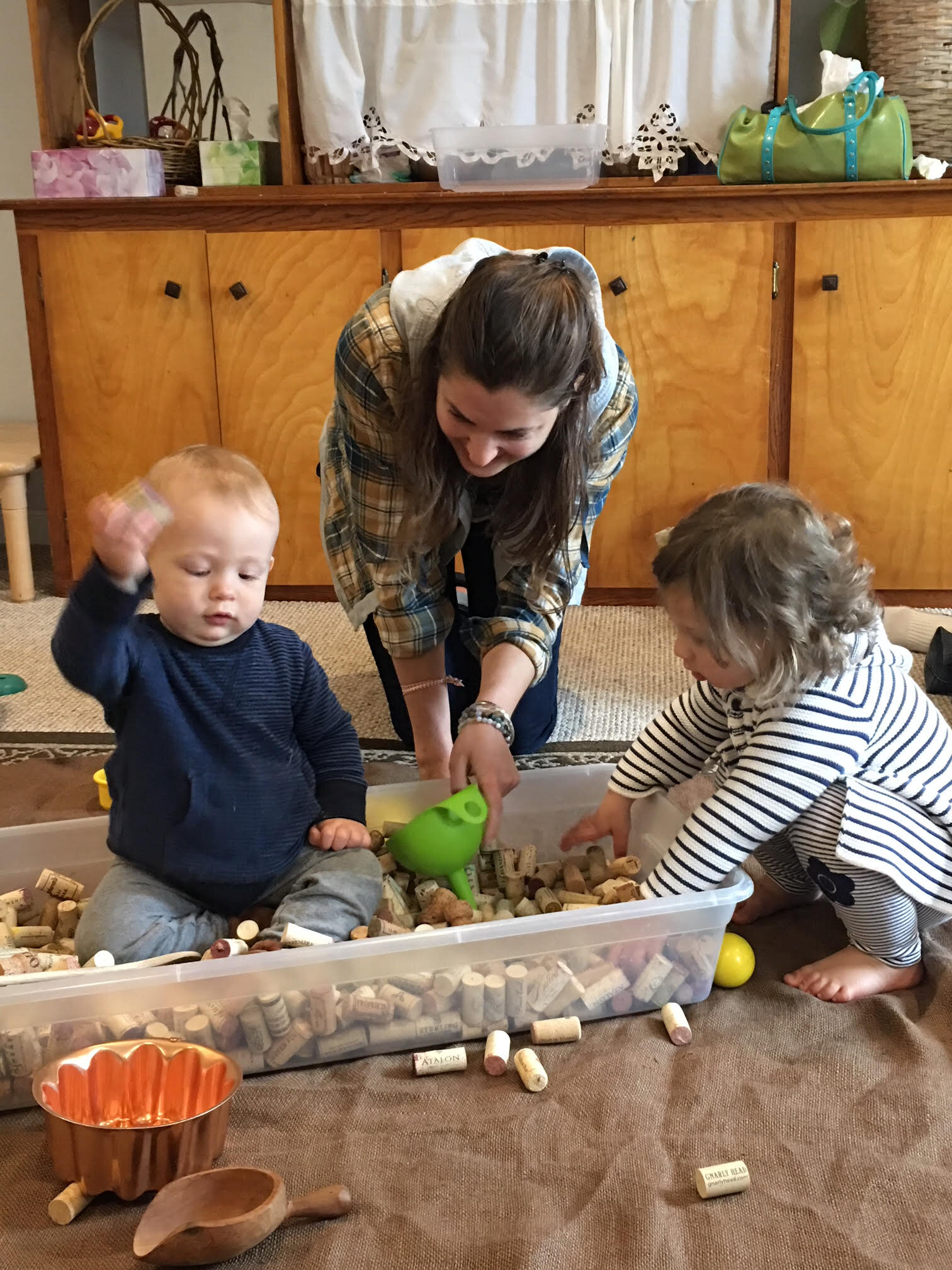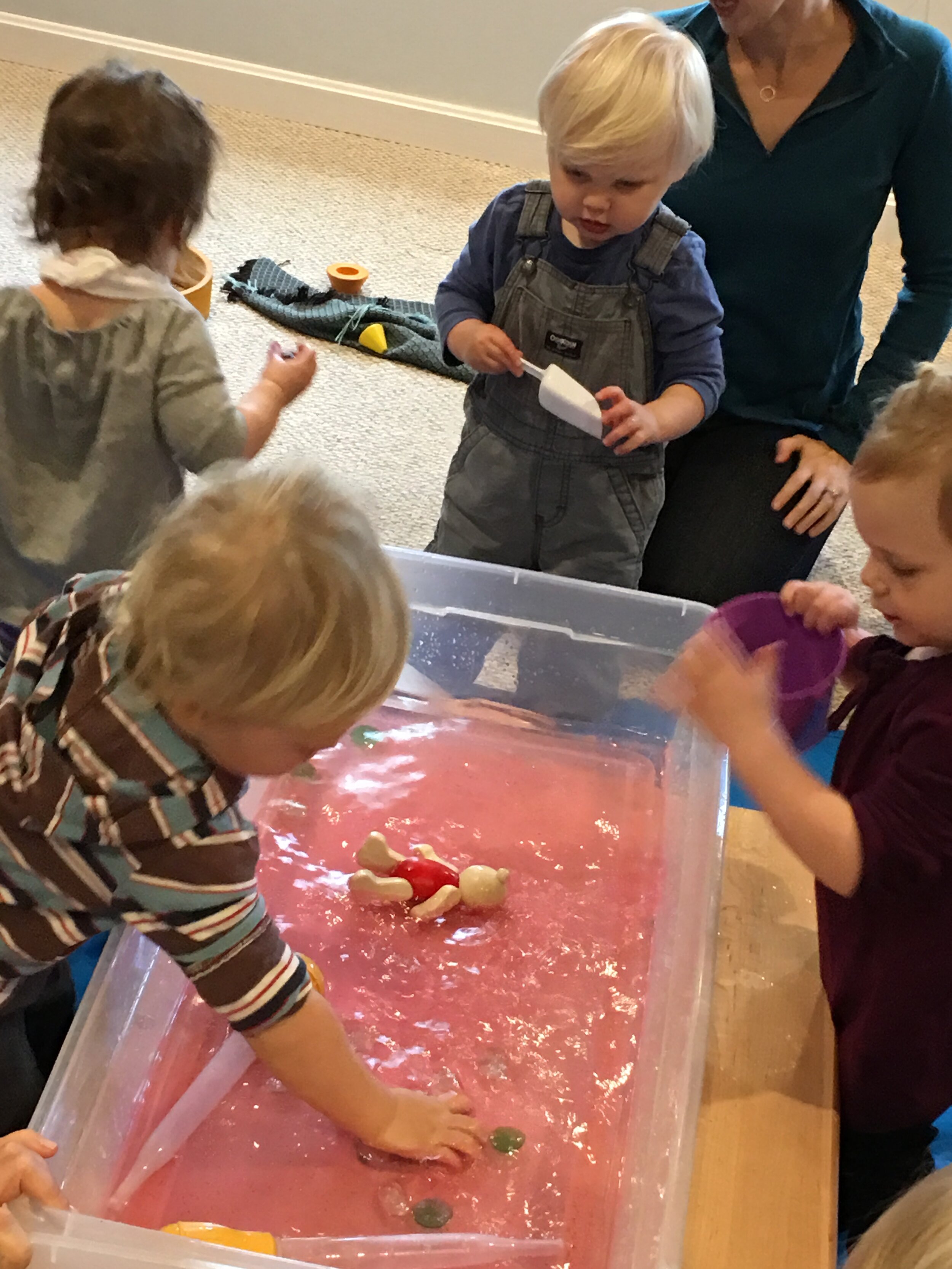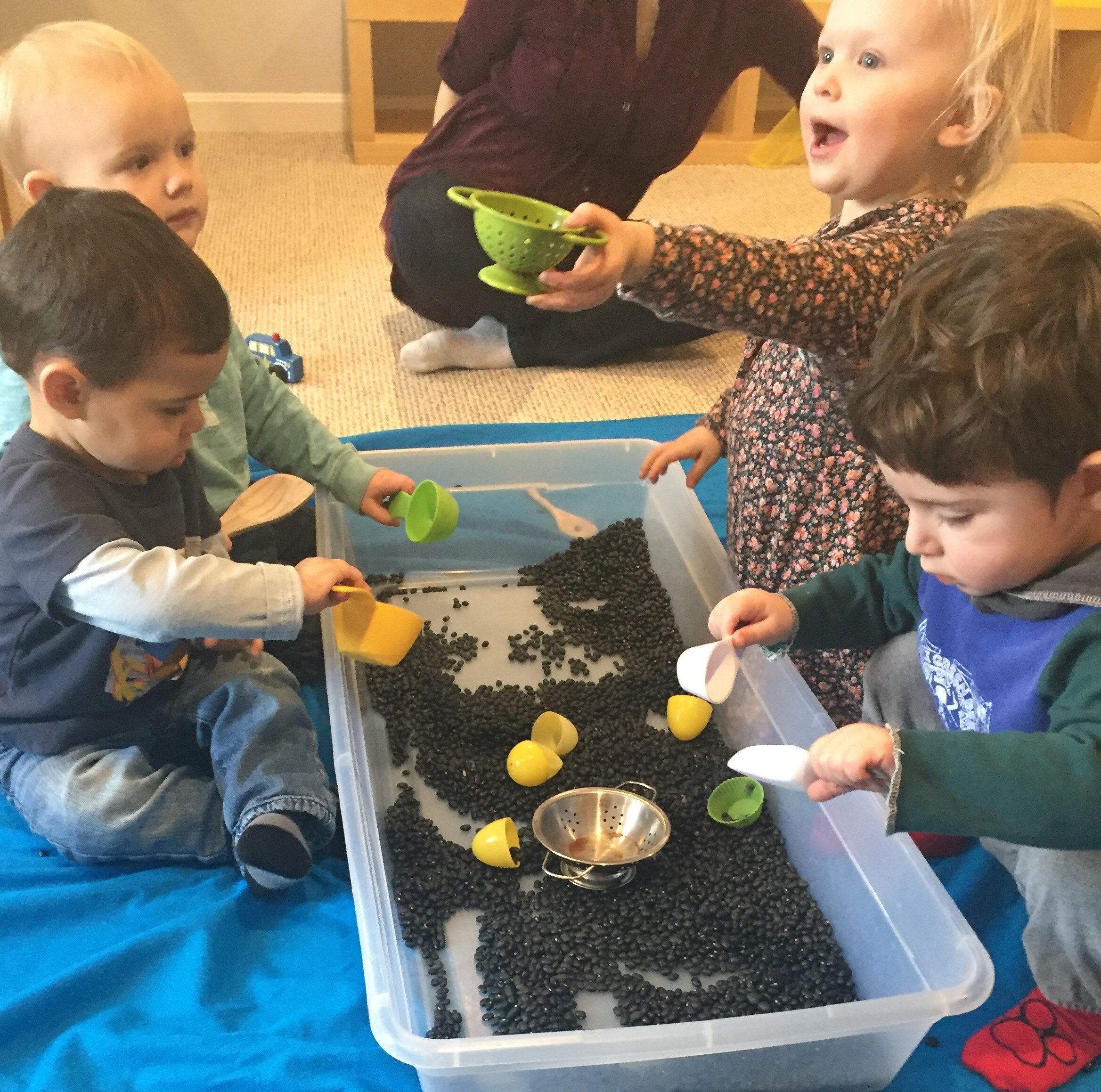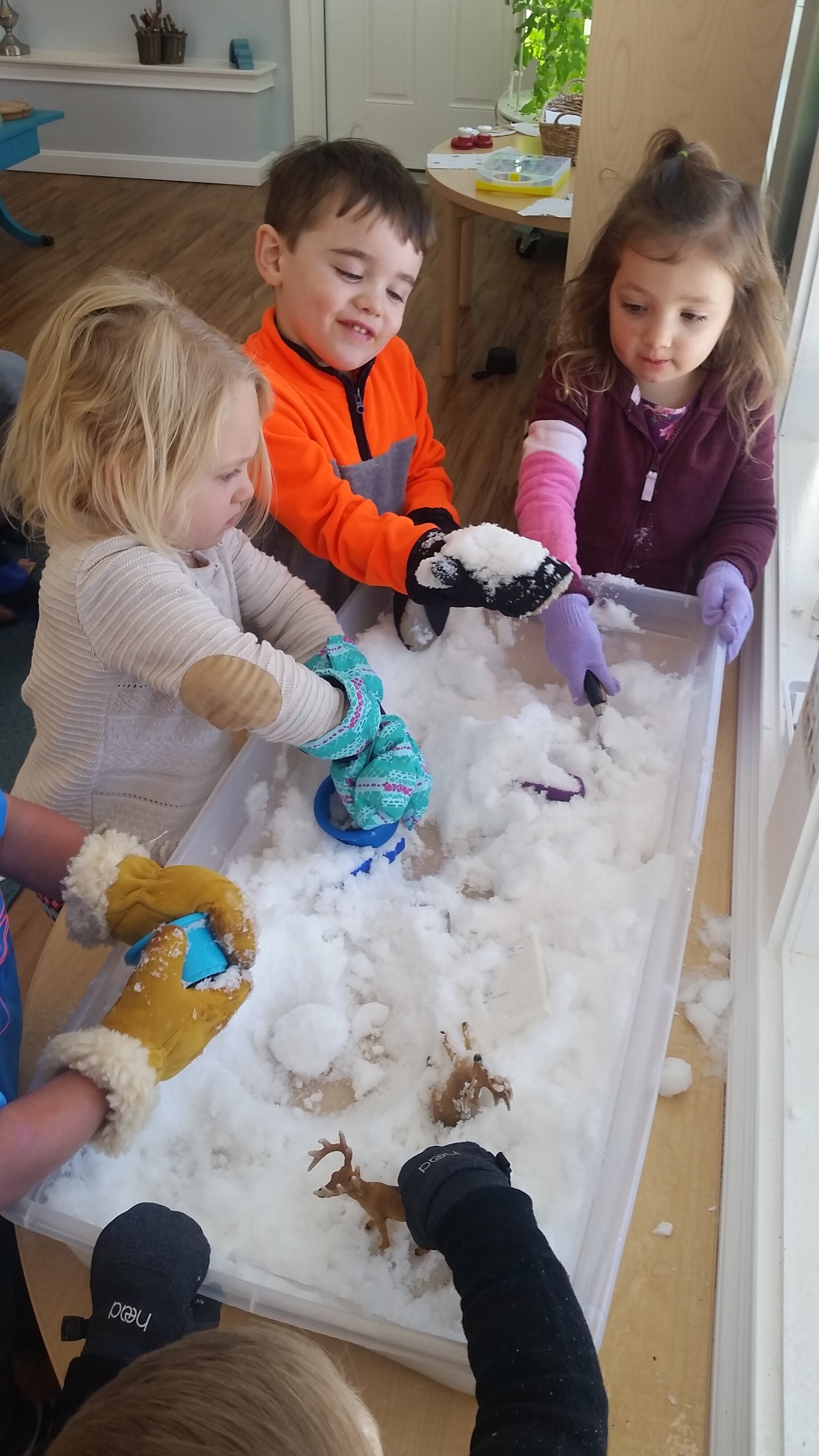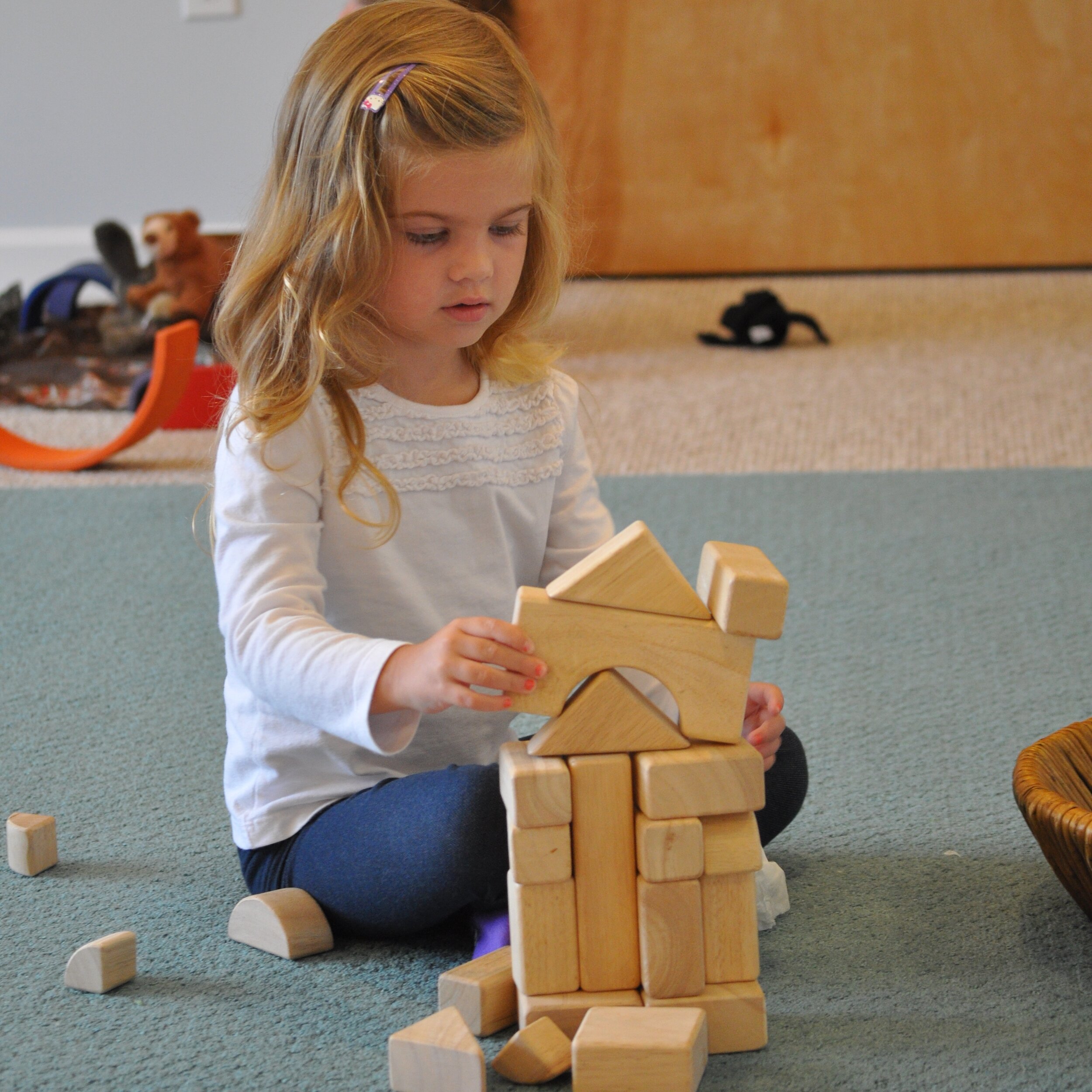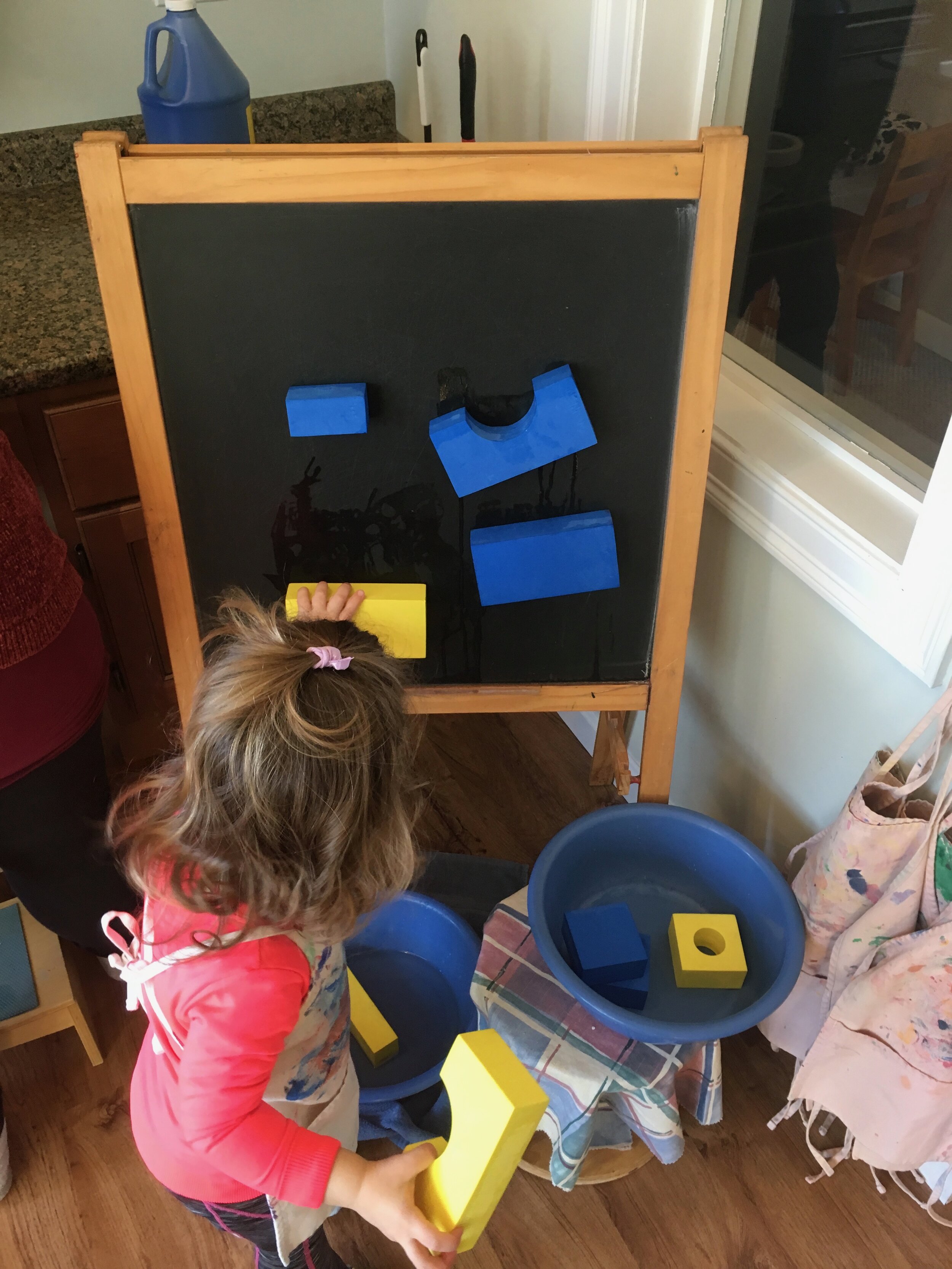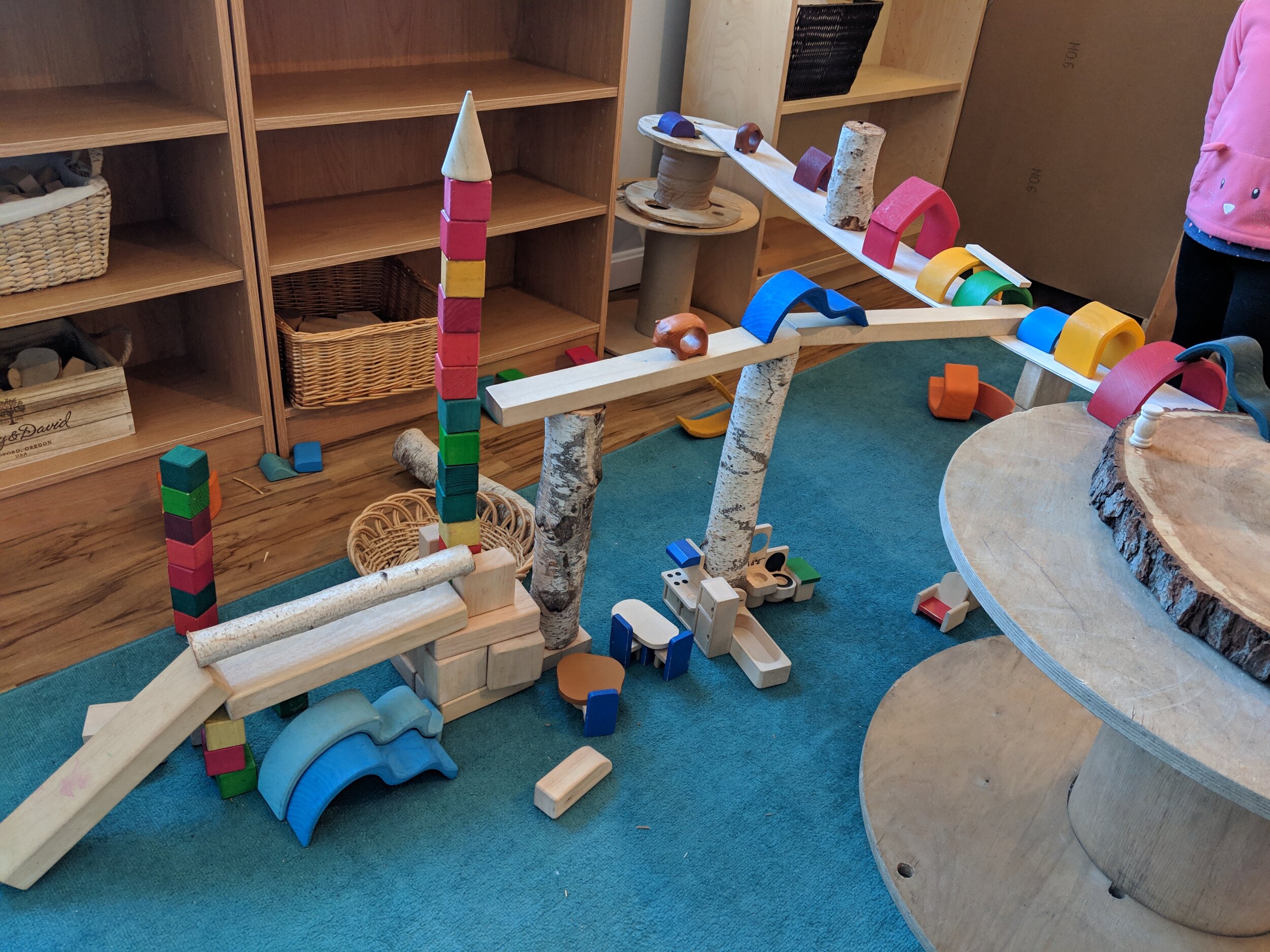LEARNING THROUGH PLAY: LESS IS MORE
TWO SIMPLE TRICKS TO MAXIMIZE YOUR CHILD’S LEARNING
Picture a modern-day toy commercial: A loving dad sits dutifully beside his baby. They both gleefully gaze at a large, brightly colored, plastic, ball-ramp contraption. Dad picks up a ball, drops it down the top ramp, and together they watch it zig-zag back and forth. As it descends, colored lights flash, bells and whistles resound. The ball rolls out the bottom ramp toward them. Dad looks at Baby, Baby looks at Dad, and both clap in delight.
What’s wrong with this picture? Aren’t they having fun? Bonding? Learning something?
You may have heard this famous quote often attributed to Albert Einstein: “Play is the highest form of research.”
But what, exactly, is research? Research involves systematic inquiry (… I wonder what will happen when…?), data collection (…ok, so THAT happened when I did that, but if I do THIS instead, what will happen?), and extrapolating critical information to form an interpretation ( …Wow! That was AWESOME! Let’s do it again…and again and again…).
The baby in the example above is making some observations...but the overall play experience is passive. Idly watching, being entertained with intrusive audiovisual stimulation, learning to expect to be entertained…and then to be praised for it! If we take a step back, we can see the entire pattern in our isolated toy commercial example is actually the widely accepted societal norm of learning through play in the modern world—and sneakily, it encourages us to buy the next flashing-plastic gizmo, and the next and the next… But at Harmony, we approach play differently.
Day after day, throughout our 11 years of thoughtfully setting out materials and carefully observing children at play, our own research has proven itself true: the highest quality of learning through play occurs naturally when we keep it simple. When you spend time with young children, you can easily do this too.
Two Easy Tricks to Foster Top-Quality Play:
1. Keep play materials simple. Toys that offer the best learning opportunities for children don’t do anything for them. The toy is completely passive, requiring the child to the be the active participant in the play (notice this is the exact opposite of our toy commercial example, wherein the toy was active and the child was passive). Wooden blocks, empty thread spools, a bin filled with dried beans and a couple of measuring cups to scoop and pour, a basketful of brightly colored squeezy-fruit pouch or milk caps, a large bin of water plus a few spoons and ladles—once you open your mind to potential simple play materials, the possibilities literally become endless. Look around your home with fresh eyes. Consider reducing the presence of button-pushing, flashing, singing, overstimulating toys. (Maybe keep one or two out and tuck the rest away for a rainy day.) Replace them with bins and baskets thoughtfully filled with materials that do less, leaving space for your child to do more. (For more simple play material ideas, stroll through the images on our website or revisit our Nurturing Your Child’s Innate Curiosity post.)
2. Get out of the way! What a welcome thought for exhausted parents! Now that you’ve set out the simple materials, let your child do the discovering while you do the dishes, check your email, flip through a magazine, sip your coffee! Your role as a parent is not to entertain your child or to shower empty praise—save your praise for truly special, earned moments to ensure it’s always meaningful. When it comes to your child’s play, do less. Say less. Remind yourself: the less you are involved in your child’s play, the more creative, imaginative and self-reliant he or she is going to be.
We’d love to see any Harmony-inspired moments you capture along your child’s early years journey. Tag us (@HarmonyNLC) on Facebook and Instagram, and use the hashtags #HarmonyNaturalLearningCenter #TheHarmonyApproach #HarmonyNLC
______________________________
Interested in introducing more of The Harmony Approach to your preschooler at home? Check out Harmony at Home today (FREE activities available).
Now accepting Multi-Track Kindergarten (ages 4.9 - 6Y) applications for the coming school year. Schedule Your Tour today!



